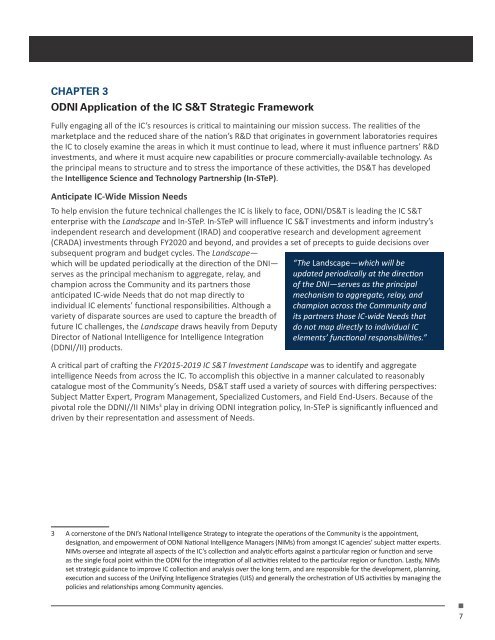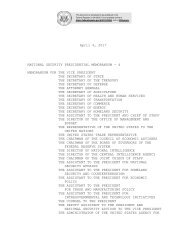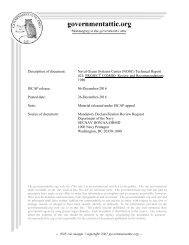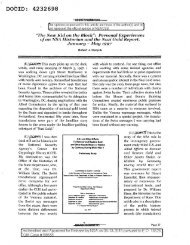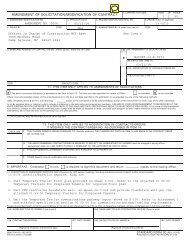IC S&T STRATEGIC PLAN
dni-sci-tech-2016-20-plan
dni-sci-tech-2016-20-plan
Create successful ePaper yourself
Turn your PDF publications into a flip-book with our unique Google optimized e-Paper software.
CHAPTER 3ODNI Application of the <strong>IC</strong> S&T Strategic FrameworkFully engaging all of the <strong>IC</strong>’s resources is critical to maintaining our mission success. The realities of themarketplace and the reduced share of the nation’s R&D that originates in government laboratories requiresthe <strong>IC</strong> to closely examine the areas in which it must continue to lead, where it must influence partners’ R&Dinvestments, and where it must acquire new capabilities or procure commercially-available technology. Asthe principal means to structure and to stress the importance of these activities, the DS&T has developedthe Intelligence Science and Technology Partnership (In-STeP).Anticipate <strong>IC</strong>-Wide Mission NeedsTo help envision the future technical challenges the <strong>IC</strong> is likely to face, ODNI/DS&T is leading the <strong>IC</strong> S&Tenterprise with the Landscape and In-STeP. In-STeP will influence <strong>IC</strong> S&T investments and inform industry’sindependent research and development (IRAD) and cooperative research and development agreement(CRADA) investments through FY2020 and beyond, and provides a set of precepts to guide decisions oversubsequent program and budget cycles. The Landscape—which will be updated periodically at the direction of the DNI—serves as the principal mechanism to aggregate, relay, andchampion across the Community and its partners thoseanticipated <strong>IC</strong>-wide Needs that do not map directly toindividual <strong>IC</strong> elements’ functional responsibilities. Although avariety of disparate sources are used to capture the breadth offuture <strong>IC</strong> challenges, the Landscape draws heavily from DeputyDirector of National Intelligence for Intelligence Integration(DDNI//II) products.“The Landscape—which will beupdated periodically at the directionof the DNI—serves as the principalmechanism to aggregate, relay, andchampion across the Community andits partners those <strong>IC</strong>-wide Needs thatdo not map directly to individual <strong>IC</strong>elements’ functional responsibilities.”A critical part of crafting the FY2015-2019 <strong>IC</strong> S&T Investment Landscape was to identify and aggregateintelligence Needs from across the <strong>IC</strong>. To accomplish this objective in a manner calculated to reasonablycatalogue most of the Community’s Needs, DS&T staff used a variety of sources with differing perspectives:Subject Matter Expert, Program Management, Specialized Customers, and Field End-Users. Because of thepivotal role the DDNI//II NIMs 3 play in driving ODNI integration policy, In-STeP is significantly influenced anddriven by their representation and assessment of Needs.3 A cornerstone of the DNI’s National Intelligence Strategy to integrate the operations of the Community is the appointment,designation, and empowerment of ODNI National Intelligence Managers (NIMs) from amongst <strong>IC</strong> agencies’ subject matter experts.NIMs oversee and integrate all aspects of the <strong>IC</strong>’s collection and analytic efforts against a particular region or function and serveas the single focal point within the ODNI for the integration of all activities related to the particular region or function. Lastly, NIMsset strategic guidance to improve <strong>IC</strong> collection and analysis over the long term, and are responsible for the development, planning,execution and success of the Unifying Intelligence Strategies (UIS) and generally the orchestration of UIS activities by managing thepolicies and relationships among Community agencies.7


